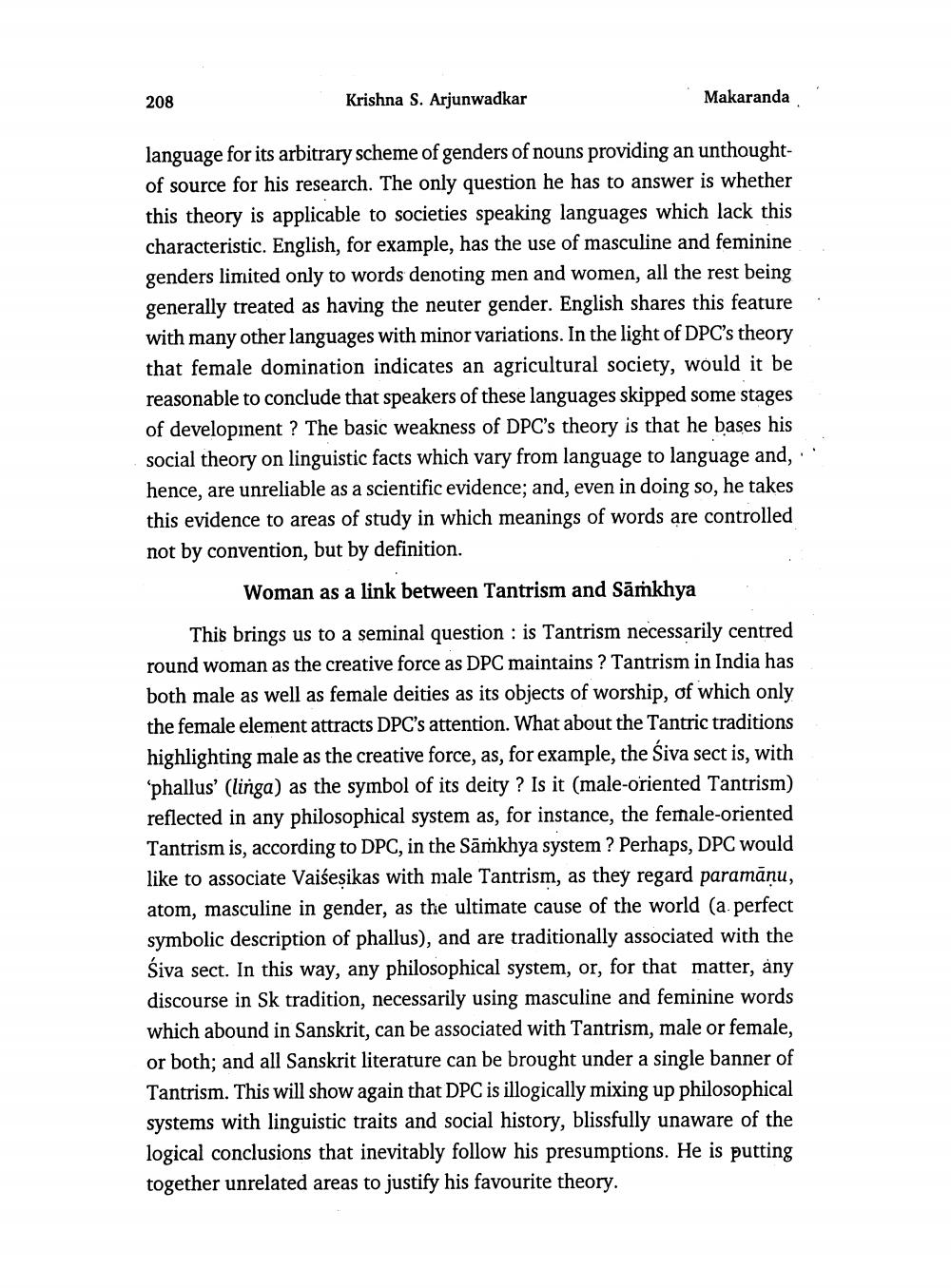________________
208
Krishna S. Arjunwadkar
Makaranda
language for its arbitrary scheme of genders of nouns providing an unthoughtof source for his research. The only question he has to answer is whether this theory is applicable to societies speaking languages which lack this characteristic. English, for example, has the use of masculine and feminine genders limited only to words denoting men and women, all the rest being generally treated as having the neuter gender. English shares this feature with many other languages with minor variations. In the light of DPC's theory that female domination indicates an agricultural society, would it be reasonable to conclude that speakers of these languages skipped some stages of developinent ? The basic weakness of DPC's theory is that he bases his social theory on linguistic facts which vary from language to language and, hence, are unreliable as a scientific evidence; and, even in doing so, he takes this evidence to areas of study in which meanings of words are controlled not by convention, but by definition.
Woman as a link between Tantrism and Sāmkhya
This brings us to a seminal question : is Tantrism necessarily centred round woman as the creative force as DPC maintains ? Tantrism in India has both male as well as female deities as its objects of worship, of which only the female element attracts DPC's attention. What about the Tantric traditions highlighting male as the creative force, as, for example, the Siva sect is, with ‘phallus' (linga) as the symbol of its deity? Is it (male-oriented Tantrism) reflected in any philosophical system as, for instance, the female-oriented Tantrism is, according to DPC, in the Samkhya system ? Perhaps, DPC would like to associate Vaiseșikas with male Tantrism, as they regard paramānu, atom, masculine in gender, as the ultimate cause of the world (a perfect symbolic description of phallus), and are traditionally associated with the Śiva sect. In this way, any philosophical system, or, for that matter, any discourse in Sk tradition, necessarily using masculine and feminine words which abound in Sanskrit, can be associated with Tantrism, male or female, or both; and all Sanskrit literature can be brought under a single banner of Tantrism. This will show again that DPC is illogically mixing up philosophical systems with linguistic traits and social history, blissfully unaware of the logical conclusions that inevitably follow his presumptions. He is putting together unrelated areas to justify his favourite theory.




